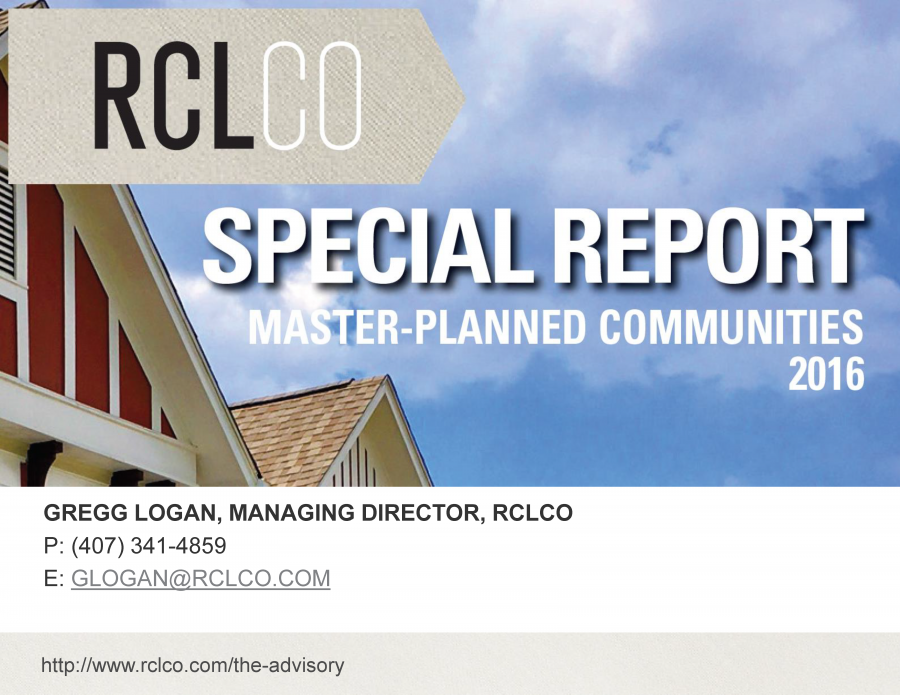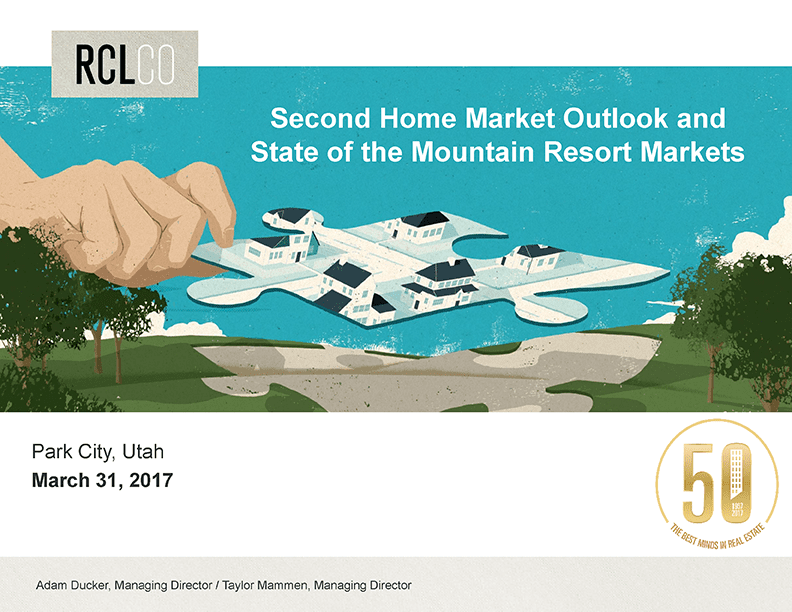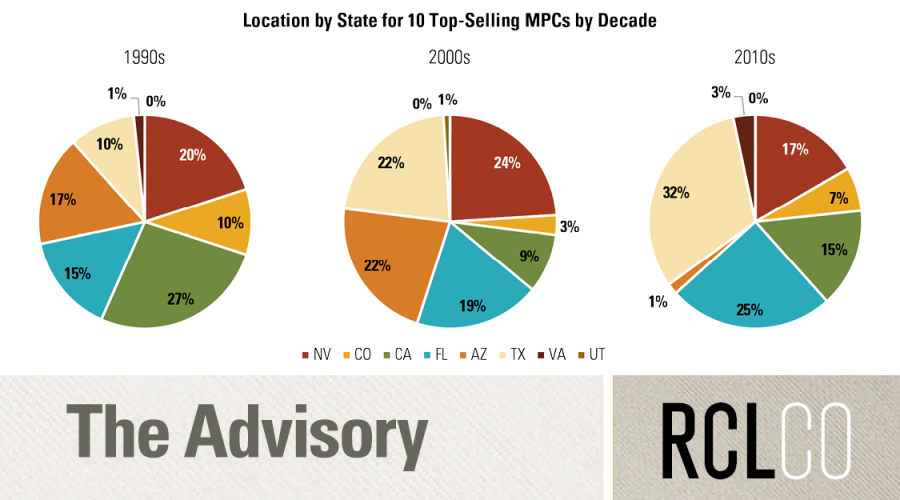Part 1 of RCLCO Forecast: Understanding the Demand for New Housing
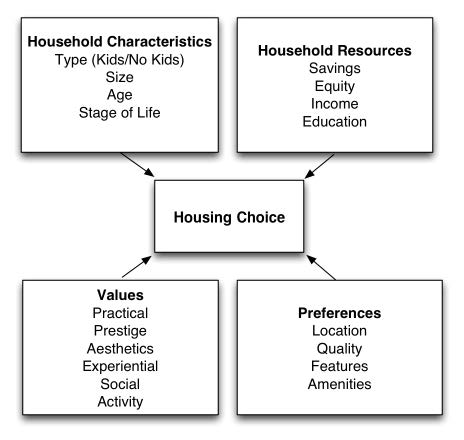
This is the first installment in a series examining New US Housing Demand, relative to underlying demand drivers, as the residential market recovers and over the next ten years.
Part 1: Generational and Lifestage Influences on New Home Demand
In many markets, sales of distressed residential properties have temporarily diminished the demand for new housing, distorting our understanding of what actually drives housing demand. As the market resolves over the next several years, it’s once again critical to understand real demand fundamentals. Such understanding is essential whether we’re focused on repositioning existing residential assets or planning new developments. Since the “turn” in the market is coming, now is the time to prepare, starting with understanding the markets for whom we’re creating these repositioned and/or new developments.
Although much attention is given to interpretations of consumer preference surveys, suggesting broad changes relative to what future housing consumers will want, housing choices are much more complicated than stated preference alone would indicate. It would be much easier to generalize and conclude “Boomer’s wanted this” but “Generation Y will all want that”, but we find it vital to consider a range of factors in our forecast models, as well as to look at actual behavior. A range of such influencing factors is graphically illustrated below:

The demand for new housing results from new household creation as well as the turnover of existing households as they “upgrade”, “downsize”, change tenure from renter to owner, or more recently, owner to renter, or simply move to a new area. A key approach to analyzing housing demand is examining for whom are we creating this built environment at a given point in time. Thinking in terms of generational demand is helpful, as one of the most important demographic measures is where households are in their lifestage. Understanding where various generational cohorts are in their life- stage provides us with the big picture of where the major demand for housing will be at any point in time, modified of course by all the factors in the illustration on the left. For example, it should come as no surprise that many young, childless, Generation Y singles and couples want to rent apartments near the action. But this likely does not reflect a long-term preference as much as the stage of life they’re in at the moment. We should be careful not to assume that choice is a permanent shift; when they marry or have their first child, their choices may change.

Where each generations is relative to lifestage influences major shifts in the housing market; for example, the chart below shows Generation Y entering the market as young singles and couples, a lifestage characterized by renting or being a first time homebuyer, and also shows that over time they will move through other stages, impacting demand for other housing products:
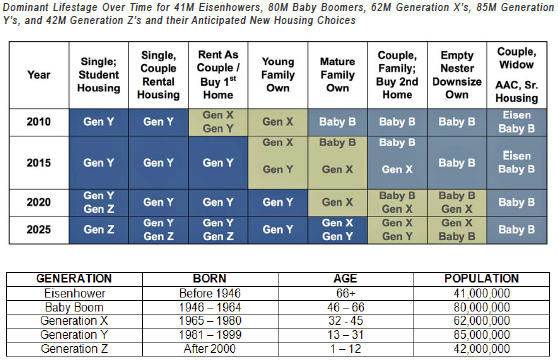
It’s not simply preferences that change, it’s who the consumers are at any particular time, how many of them there are that are active in the market, and their resources and needs at that particular lifestage. For example, much has been made regarding the sheer size of Generation Y and the Baby Boomers and their potential impacts on housing. But the size of a generation is just part of its influence on the housing market; twice as many people in the Generation X age range moved last year compared to those in the Baby Boomer age range, so despite their smaller size, their impact was greater.
Part 2: Myths and Facts About Generational Housing and Location Preferences
The next installment in our series examining US Housing Demand will look at Myths and Facts about the influence of Generation Y on residential demand. We’ll also examine the influence of middle age Gen X and Aging Boomers.
For more information, please contact Gregg Logan at glogan@rclco.com or at (407) 515-4999.
Related Articles
Speak to One of Our Real Estate Advisors Today
We take a strategic, data-driven approach to solving your real estate problems.
Contact Us




